The Best Electrical Distributor Software
Electrical distribution software streamlines quoting, inventory control, and order tracking for electrical suppliers. We’ve evaluated the top systems for distributors of all sizes so you can find the best fit for your needs.

- Multiple reporting tools
- Specialized for electrical, plumbing, and HVAC industries
- Highly customizable to fit different business needs
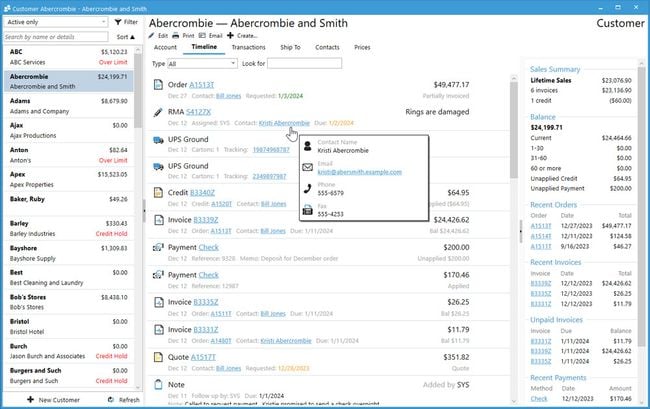
- Provides batch tools through the order manager to track process workflows
- Integrates directly with QuickBooks for easy data migration
- Can handle millions of SKUs for scalability
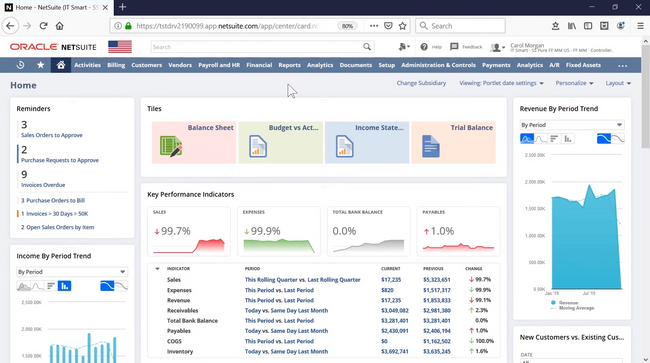
- Hundreds of third-party add-ons available
- Feature sets for multiple industries
- Highly customizable
We used our advanced review methodology to select the top options for electrical distributors, from small businesses to large enterprises. We focused on key features like compliance, inventory management, and advanced integrations.
| Software | Best For | Deployment Options | Pricing |
|---|---|---|---|
| Epicor Eclipse | Complex Inventory Management | Cloud or On-Premise | $120 - $200/user/month |
| Acctivate | QuickBooks Integration | Cloud or On-Premise | $5,000 - $14,000/year |
| NetSuite | Large Electrical Distributors | Cloud | $3,000 - $7,500+/month |
| Accolent | Small Businesses | Cloud or On-Premise | $2,500/one-time |
| Infor CloudSuite Distribution | Growing & Multi-Location Distributors | Cloud | $4,000 - $10,000+/month |
| VAI S2K | Demand Forecasting | Cloud | $250/user/month |
- Epicor Eclipse: Best Complex Inventory Management
- Acctivate: Best QuickBooks Integration
- NetSuite: Best for Large Distributors
- Accolent: Best for Small Businesses
- Infor Cloudsuite Distribution: Best for Multi-Location Distributors
- VAI S2K: Best Demand Forecasting
Epicor Eclipse - Best Complex Inventory Management
Epicor Eclipse offers advanced kitting and assembly functionalities that streamline complex inventory management. These tools can help you assemble and manage kits, enhancing operational accuracy and efficiency.
Managing complex product combinations like circuit breaker panels can become labor-intensive. These panels require various components, including circuit breakers, wiring, sub-panels, grounding bars, labels, and screws. Managing each component individually can be time-consuming and increase the potential for errors. Epicor Eclipse helps overcome these challenges by allowing you to create a kit with all the necessary components assigned to a unique SKU, making order processing and inventory management easier. Whenever a customer orders a circuit panel, you can quickly locate the pre-assembled kit, reducing picking and packing time.
The software solution can also manage the assembly of circuit breaker panels and other products. By defining a BOM in the system, you can track the assembly process, monitor component usage, and ensure accurate inventory levels. This can be particularly useful for custom or large-scale assemblies, where precise tracking is necessary.
Learn more about Epicor Eclipse on our product page.
Acctivate - Best QuickBooks Integration
Acctivate’s inventory availability and ordering features enhance your control over stock levels, tracking, and purchasing processes. Its integration with QuickBooks ensures that all your inventory, order, and financial data sync automatically. Whenever you receive an order, the system instantly updates your inventory to reflect the transaction in QuickBooks.
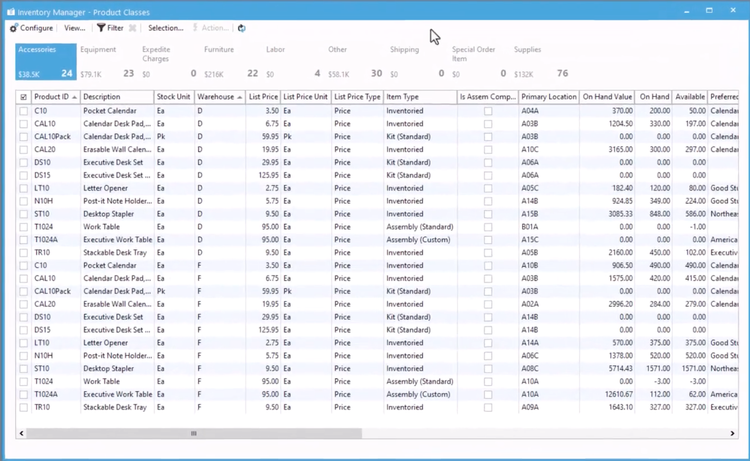
Using the system, you can track stock levels of your most popular products, like circuit breakers and wiring, ensuring that these products are always on hand. Whenever a contractor places a large order for a project, Acctivate will allocate available inventory to fulfill the order promptly and update QuickBooks financials for accurate reporting. Plus, customer and vendor data syncs between the two systems, so your transaction histories and contact details remain consistent.
Acctivate further streamlines operations by automatically generating a purchase order whenever stock levels fall below the reorder point, preventing stockouts. With inventory and sales data flowing directly into QuickBooks, you’ll have access to financial reporting for a clearer view of profit, loss, and cost analyses. This gives you insights into handling demand fluctuations and maintaining optimal supply for critical components.
NetSuite - Best for Large Distributors
NetSuite’s project profitability feature provides tools for monitoring revenues, expenses, and overall profitability throughout a project’s lifecycle. This makes it easier to keep large-scale distribution projects on track financially.
The project can manage multiple projects at once, such as supplying electrical systems and components for commercial installations. Once you activate the feature, you can define custom configurations for profitability reports, specifying which accounts and items to include. These configurations allow you to create detailed reports that reflect the financial health of each supply project.
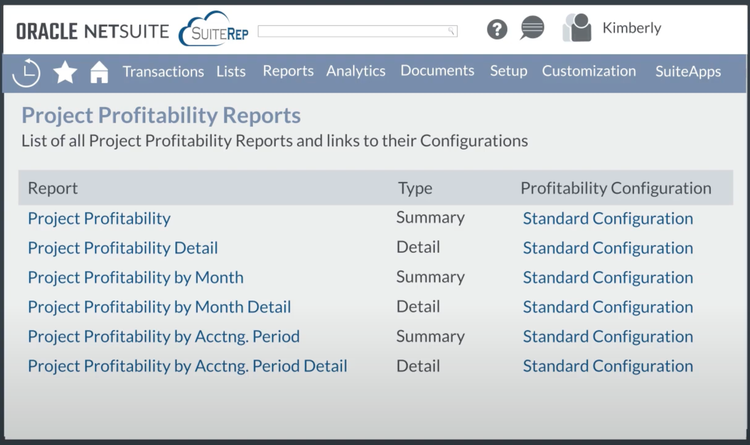
Using NetSuite, you can monitor expenses related to inventory in real time, ensuring that your spending aligns with your budgeted amounts. You can also record and forecast revenues for large contracts, including order fulfillment timelines and final payments, enabling you to assess cash flow and profitability.
Comparing actual fulfillment costs and contract revenue can identify inefficiencies or cost overruns, improving profitability. It also allows for forecasting and strategic planning by leveraging historical data and current contract performance, offering valuable insights into future financial outcomes for large supply agreements.
Accolent - Best for Small Businesses
Accolent ERP lets you efficiently manage and update product information through its integrated vendor catalog feature. It streamlines the integration of data from multiple suppliers, ensuring that product details are accurate and accessible without manual entry—a key benefit for small distributors with limited time and resources.
The system supports numerous data import methods, such as EDI and CSV files, ensuring compatibility with different vendor formats. This flexibility lets you keep your product catalogs current. Once imported, you can access product information through its advanced search tools using multiple identifiers, such as barcodes, manufacturer part numbers, production descriptions, and product codes.

The system also handles complex pricing models, allowing you to accurately maintain and update pricing structures based on various vendor agreements and market conditions. This is critical for remaining competitive, as pricing can vary based on factors like bulk purchasing or manufacturer discounts.
The inventory control features allow you to monitor stock levels across multiple warehouses, minimizing stockouts and improving customer satisfaction. For small distributors, this means more efficient operations without expending extensive resources.
Infor Cloudsuite Distribution - Best for Multi-Location Distributors
Infor Cloudsuite Distribution is a cloud-based ERP designed specifically for wholesale distributors. It centralizes everything from order management, inventory, purchasing, and financials into a single platform. Its central structure allows multi-location and multi-company distributors to effectively manage operations across many branches.
This is supported by its strong multi-location inventory management. CloudSuite Distribution lets planners view availability across warehouses and create intercompany transfers, ensuring all locations are properly stocked. You can establish preset rules to generate these transfers automatically when a sales order is submitted, ensuring customers receive their products as quickly and affordably as possible.
Multi-location support extends to customer-facing operations. If an electrical contractor submits an order with a local rep but needs materials picked up at another location, you can take the order and payment locally while the system routes fulfillment to the closest branch behind the scenes. Customer pricing, order status, and the order ticket remain identical, so pickup is fast and straightforward at the chosen location.
That said, pricing is quote-based and will reflect its enterprise scope. Infor Cloudsuite Distribution is not a great fit for small businesses with minimal staff or inventory needs. It is best for growing and mid-sized distributors looking for better control of their entire operations. Quotes will vary company to company and scale based on a company’s size, complexity, and required modules.
VAI S2K - Best Demand Forecasting
VAI S2K offers an advanced demand forecasting feature that integrates with its purchasing and inventory management modules. With this integration, the system analyzes historical sales data and current market trends, generating accurate sales forecasts for each product.
The demand planning feature utilizes advanced algorithms to predict future patterns. These algorithms include:
- Exponential Smoothing: Useful for products with stable demand, like wires and cables. This method prioritizes recent data while still considering historical demand, making it ideal for items with consistent usage patterns.
- Linear Regression: Models demand based on seasonality, price changes, or market conditions. For instance, it can predict increased demand for circuit breakers during peak construction periods so you can prepare for cyclical purchasing needs.
- Holt-Winters Methods: Factors in baseline demand, trends, and seasonality for products affected by regular demand cycles, like thermostats and capacitors in the winter and summer. By considering these three factors, you can reduce unnecessary costs and avoid over and underproduction.
If a certain product is in high demand during a specific period, the system will suggest purchasing more in advance to meet the anticipated demand. By leveraging these insights, you can ensure product availability and reduce the risk of stockouts, leading to improved customer satisfaction.
Other Systems We Like
We also like Advantive ERP for its strong reporting capabilities, which allow you to analyze metrics like inventory turnover and gross margin return on investment (GMROI). The system also offers strong compliance tracking through a database that integrates various functions, including order processing, inventory management, and quality control.
What is Electrical Distributor Software?
Electrical distributor software is designed for distributors, manufacturers, and contractors who sell and distribute electrical products, including wiring, circuit breakers, lighting fixtures, and other electrical components. This software helps these companies automate and optimize their processes from financial, inventory, warehouse, CRM, and purchasing management.
Other functionalities may include:
- Contract management: Involves overseeing contracts with suppliers, customers, and service providers.
- Vendor catalog integration: Connects distribution software to a vendor’s product catalog, allowing real-time access to product specifications, pricing, availability, and descriptions.
- Reporting and analytics: Gather and analyze data to generate actionable insights and improve decision-making. You can track key metrics such as sales, inventory, order fulfillment, and supplier performance with reporting and analytics.
Common Challenges
- Inventory Management and Stock Visibility: It’s common to deal with a wide range of products, including bulky and specialized items. The software can help you maintain accurate inventory counts and ensure real-time inventory visibility across multiple warehouses.
- Price Management: You’ll likely need different pricing models for various customer segments, such as contractors and resellers. Distribution software can help you manage discounts and special pricing agreements (SPAs) while ensuring consistency across all channels.
- Order Management: Ensuring quick and accurate order processing is crucial, especially when dealing with large orders or customized items. Your system must be able to handle order fulfillment and track orders throughout their lifecycle.
- Regulatory Compliance: Complying with industry-specific requirements, including safety standards and environmental regulations, can be challenging. The proper software solution will support compliance tracking, reporting, and documentation management.
Key Features and Benefits
- Enhanced Product Traceability: Track and manage products throughout their lifecycle, from procurement to end-use. With barcode scanning, RFID technology, and real-time data tracking, you can monitor the flow of goods and ensure that products aren’t lost or misplaced.
- Organized Financial Data: Better manage your financial data, including expenses, revenues, and invoicing. Electrical distribution systems can consolidate multiple revenue channels, allowing you to see all income streams in a centralized location. This makes it easy to pull up metrics and run financial reports to evaluate data.
- Streamlined Order Processing: Automates order processing to better manage stock levels, track shipments, and process payments.
- Increased Visibility: A centralized system can provide insights into sales trends, inventory turnover, and customer demand.
- Efficient Inventory Management: Maintain an accurate and organized inventory of electrical components, equipment, and tools. Your distribution system allows for quick order fulfillment and minimizes stockouts or overstocking.
- Multichannel Integration: Integrate with other sales channels, such as eCommerce platforms, to ensure consistent pricing, product availability, and order history across all channels.
- Strong Compliance: Ensure that all electrical components and materials meet industry standards and certifications, like UL listing and ISO certification.
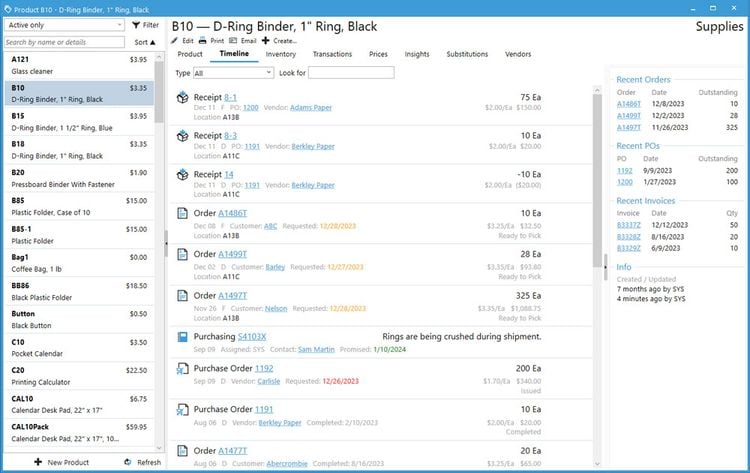
Pricing
Electrical distribution software can cost between $250/month and well over $10,000/month. The price will depend on your business size and the features you want to include. Implementation and other support fees may also make the price steeper.
Smaller distributors may consider an inventory management system that integrates with accounting software like QuickBooks. These systems are often cheaper, like Acctivate, which starts at $5,000/year for one user, or VAI S2K, which is $250/user/month.
Growing distributors may consider a generic ERP like NetSuite or a dedicated WMS that integrates with existing accounting software. These often start at $30,000/year and can easily scale up to $100,000/year for more complex operations.
Large distributors require ERP functionality with deep industry-specific capabilities and workflows. ERPs of this scale will support multi-currency, multi-company, and multi-department operations. Expect starting costs to exceed $250,000/year.
Frequently Asked Questions
Who Uses Electrical Distributor Software?
What is the Difference Between Electric Distribution Software and Power Management Software?
- Electrical distributor companies buy thousands of electrical components and products from manufacturers. They then warehouse, sell, and ship them to customers, acting as the middleman to get components into customers’ hands, ranging from one person’s house to a large business buying in bulk.
- Power management software helps streamline operations involved in distributing electricity in a power grid. It optimizes usage and analyzes performance to ensure the grid’s efficiency. While these systems can fall under “electrical distributor software,” they are more commonly referred to as energy management software and include different features like data collection and network analysis.













































